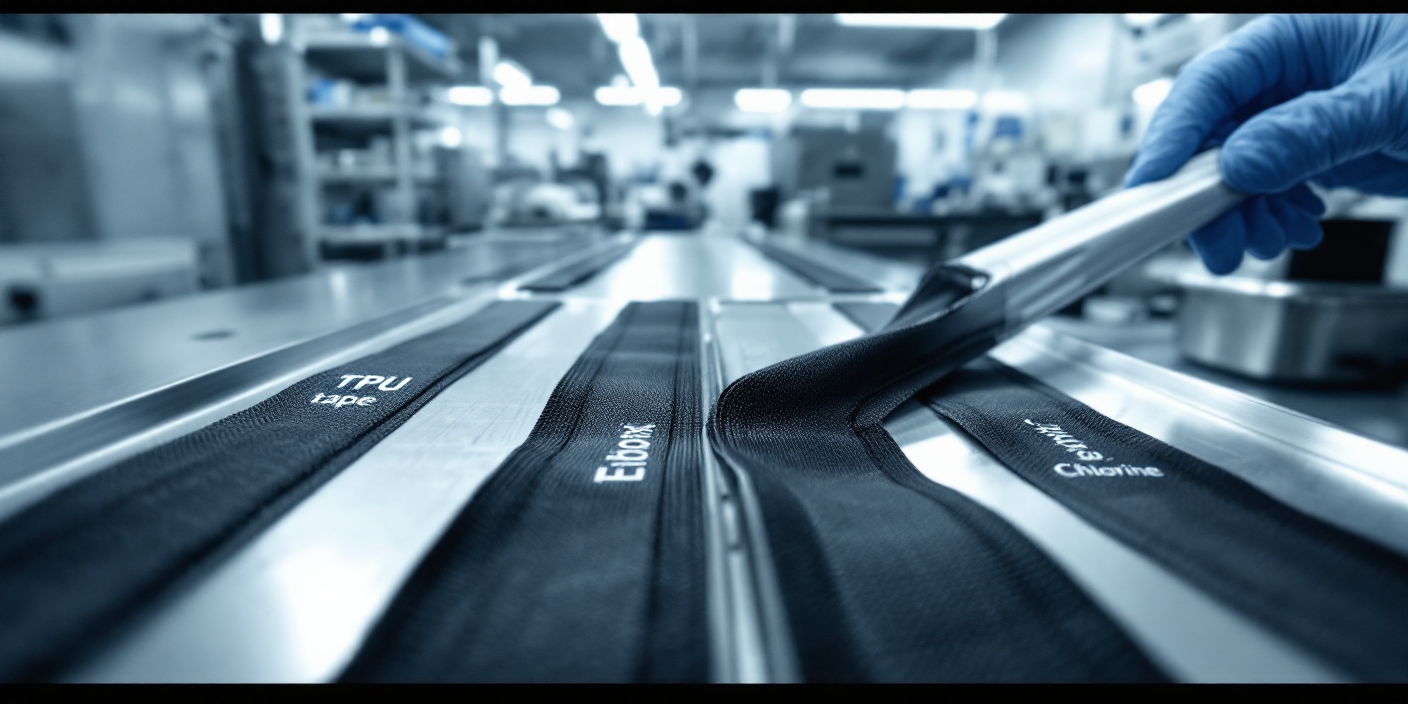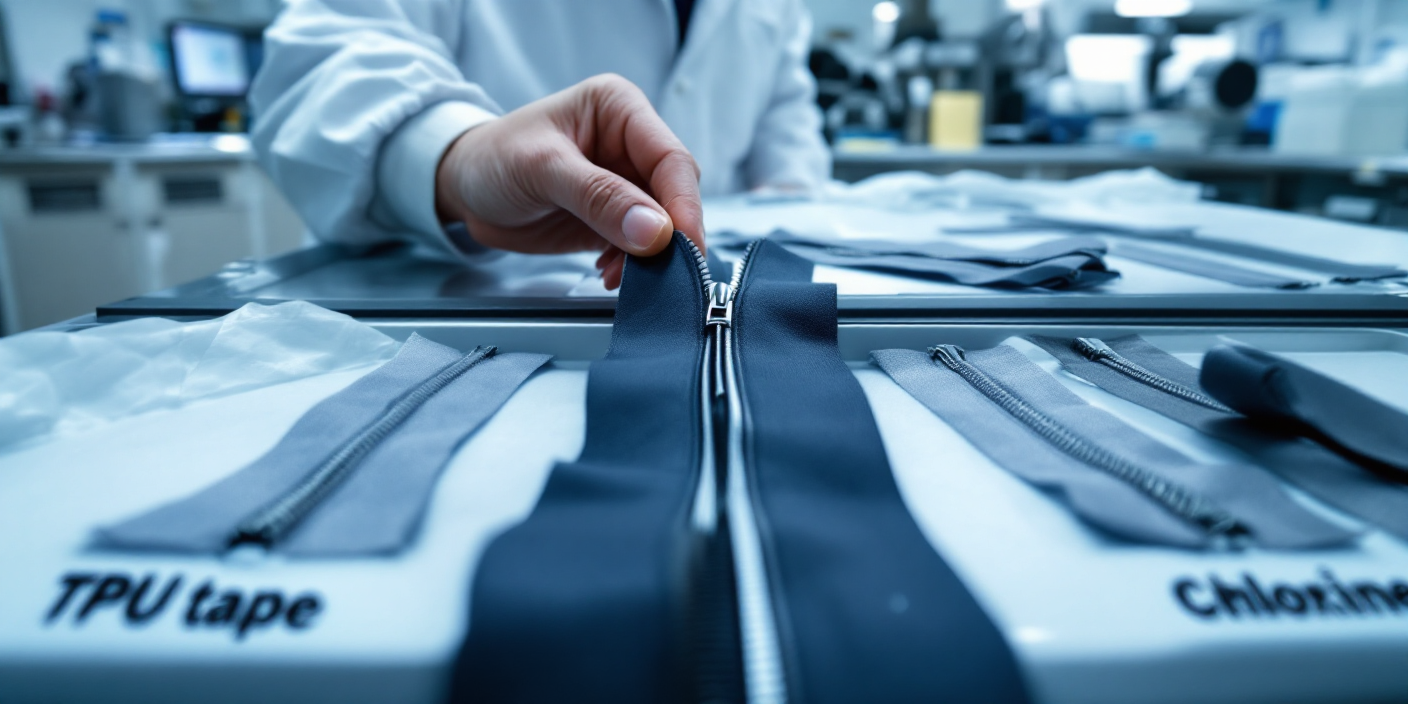When negative-pressure control or sterile barriers matter, “waterproof” isn’t enough. Airtight, RF-weldable zippers maintain seals under differential pressure, survive repeated disinfection/sterilization, and integrate cleanly into TPU/PU-coated medical fabrics—without stitch holes or adhesives. For isolation tents, portable cleanrooms, biocontainment suits, and medical device covers, the closure is a critical component of system performance—not an accessory.
Why it fits medical/biocontainment:
Waterproof closures can block liquid yet leak under vacuum/PSI differentials typical of isolation environments. Gas follows micro-paths at teeth interfaces and any stitch perforation. Airtight systems pair low-permeability materials with RF-welded TPU/PU tapes to form a continuous membrane and repeatable leak-down performance after cycling. See: Zipper Testing & Validation · How Zippers Are Tested
Airtight Closures for Negative-Pressure Control
The “waterproof ≠ airtight” distinction drives specification quality. In negative-pressure tents and positive-pressure clean spaces, small differentials generate continuous driving forces for gas migration. True airtight zipper constructions address this through low-permeability tapes, tight tooth geometry, and RF-welded integration that eliminates stitch-hole leak paths. Acceptance is demonstrated through pressure-decay leak testing at operational differentials and cycle/flex retention, not just short water exposure.
Related reading: Zippers & Harsh Chemical Environments

RF-Weldable Integration with Medical Fabrics
Compatible substrates: TPU-coated and PU-coated textiles; selected medical vinyls. We provide starting weld windows (power/dwell/pressure) and seam geometry guidance; you validate on your fabric stack-up.
- Lap or lap-felled seams for smooth, cleanable panels and garments
- Weld-width control and electrode alignment for dimensional consistency
- QC checkpoints: visuals + peel/shear coupons + pressure leak checks
Implementation guide: Integrating Zippers into RF-Welded or Heat-Sealed Seams · Materials: Zipper Materials & Finishes
Built to Withstand Sterilization & Disinfection
Designed for healthcare cleaning protocols and repeated cycles. We support validation to your chemistry and cycle counts:
- Alcohols (IPA 70–91%): frequent wipe-downs
- Chlorine disinfectants (hospital ranges): stabilized formulations available
- Hydrogen Peroxide Vapor (HPV/aHP): room/equipment decon workflows
- Steam sterilization (121 °C): available materials/hardware options for applications requiring limited autoclave cycles—confirm counts during qualification
Final limits depend on specific polymer, coating weight, and hardware; we supply datasheets and sample test plans to qualify on your device/shelter. See: Why Zippers Matter in Healthcare
Components for Clean, Airtight Operation
- TPU-coated polyester (low-wick) tapes reduce capillary migration
- Engineered tooth resins for low-temp flexibility & UV stability
- Low-profile sliders for tunnel seams and gloved operation
- Corrosion-safe hardware (stainless or zinc-free) for repeated cleaning/steam
Explore components: Custom Zippers · Sliders · Continuous Zippers · All Products
Validated Performance (What We Document)
We support system-level validation on your assemblies and provide documentation packages:
- Pressure-decay / leak-down at operating differentials
- Burst margins relative to spec
- Flex-under-pressure and thermal cycling retention
- Peel / shear acceptance targets for QC release
- Lot/batch traceability, REACH/RoHS declarations, and CAD/datasheets
Helpful: How to Read Zipper Spec Sheets · Zipper Load Testing Explained · Resources · Why Choose Lenzip
Typical Medical/Biocontainment Uses
- Isolation tents & portable cleanrooms: airtight entry panels that survive frequent cycles and sterilant exposure
- Biocontainment suits/PPE: rear-entry closures, pass-throughs; smooth, cleanable exterior geometry
- Medical device/enclosure covers: sterile-field access with repeatable pressure-rated closures
See also: Healthcare Industry · Fabric Structures · Tents & Shelters

Seal Your Medical/Biocontainment Spec with Lenzip
Send your fabric, disinfectant/sterilant list, and target differential pressure/temperature. We’ll return a spec-matched zipper construction (gauge, TPU/PU tape, slider/hardware), a starting RF weld window (power/dwell/pressure), and a QC checklist (peel/shear + leak/decay) you can hand to production. U.S.-owned • Engineering support • Minimums as low as 25 units.
- Request a Sterilization & PSI Spec Match → https://lenzip.com/request-a-quote/
- Quick help: Customer Support → https://lenzip.com/customer-support/
- Explore components: Custom Zippers · Sliders · Continuous Zippers · All Products
FAQs
Can we RF-weld to our medical fabric?
Yes—TPU/PU-coated fabrics and selected vinyls. We’ll provide a starting weld window; you validate on your stack-up.
Guide: RF-Weld Integration
What peel/shear should we target?
We share acceptance targets and coupon test plans; final thresholds align to your loads and risk profile.
More: Zipper Testing & Validation
Do sterilants/autoclave cycles affect seals?
Chemistries and cycle counts vary—select stabilized TPU with stainless hardware where needed and validate cycles on your device/shelter.
